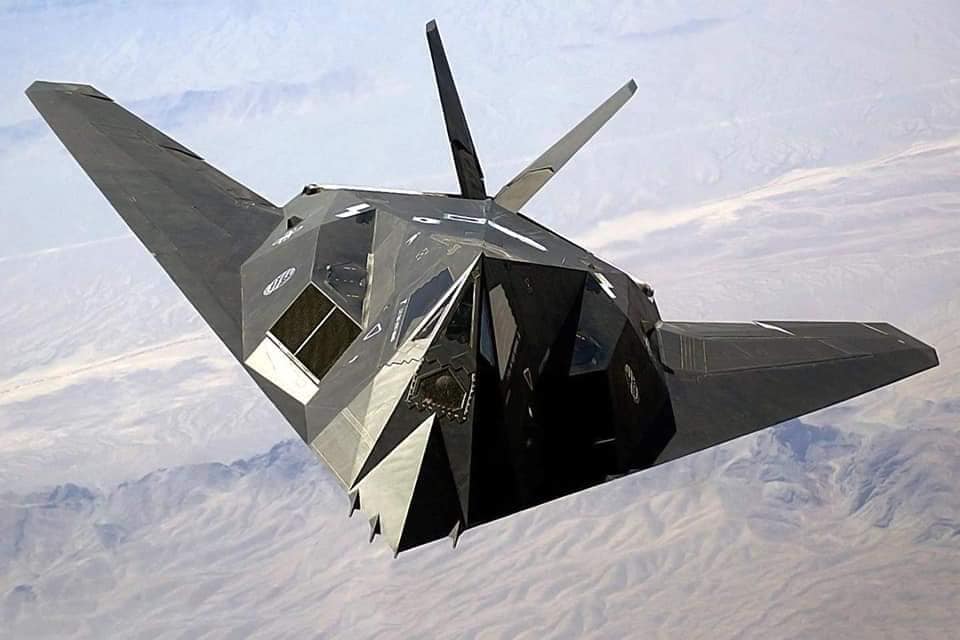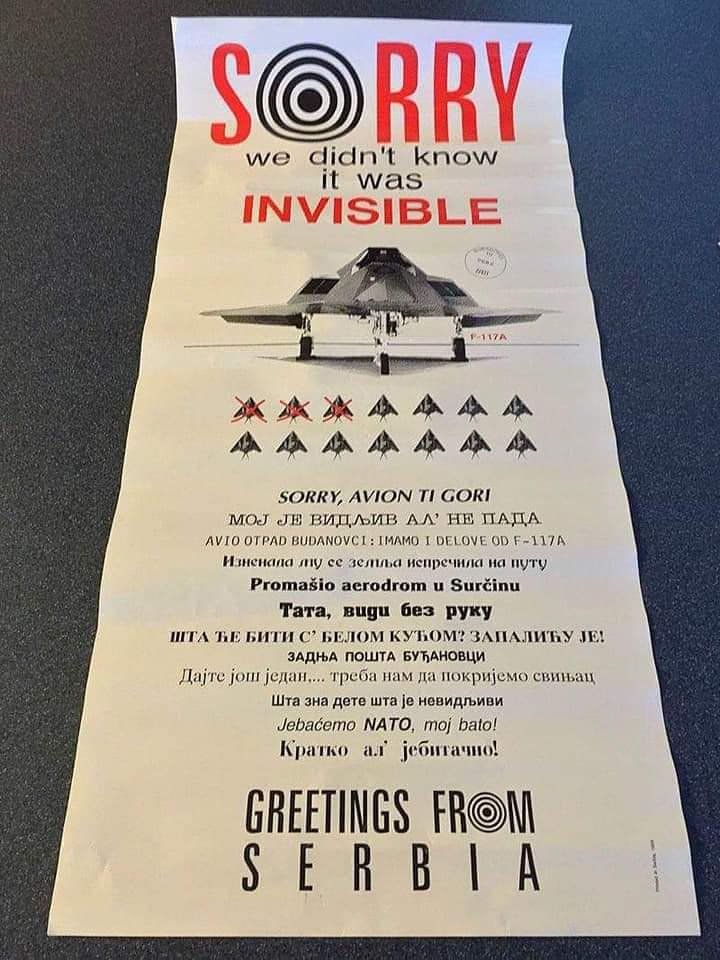F-117 down over Novi Sad. On the 27th of March 1999, an American F-117 was downed over Novi Sad. To this day, that incident is used, over and over again for some good old anti-American propaganda and to “explain” how stealth technology is useless.
First of all, “Stealth” does not mean invisible. It is not an invisibility cloak or a magic wand. Stealth aircraft are visible to some types of radar. What stealth does, is make it more difficult to detect and identify said aircraft. This delay in detection and identification gives the pilot of the aircraft more time to get close to its target. It is also good to know that the types of radar that can detect stealth aircraft are not very good when used for tracking and targeting, as they are not accurate enough for such a job. So detecting a stealth aircraft does not guarantee it can be locked and targeted. As such, the F-117 was already known to be detectable by radar under certain conditions as far back as in 1991 during the Gulf War… French Shahine (Super Crotale) AA platforms based in Saudi Arabia managed to detect and track them a couple of times on their radar…

The F-117 shot down over Yugoslavia was defeated by a whole range of factors:
1) Most of the NATO aircraft taking part in Operation Allied Force were operating from Italian bases. Russian and Yugoslav plane spotters in Italy would warn Belgrade each time coalition planes would take off from those bases. Russia even dispatched a spy ship that sailed for several weeks off the coast of Italy. As such, Yugoslav AA units were warned in advance of incoming raids as well as plane types taking part in said raids.
2) Coalition planes sometimes engaged the same targets several days in a row, often following the same flight path. This mistake was spotted and taken advantage off by Yugoslav AA units. They roughly knew what targets would be engaged in advance and what flight path NATO planes would follow. As they had also prior warning of NATO jets taking off, they had a fair idea of the precise time from which to start looking for targets.
3) Coalition planes had attacked Yugoslav military radar stations but had neglected to engage civilian ones. As such, Yugoslavia still had a fair amount of detection means and early warning systems still in place throughout the campaign. A Yugoslav delegation flew to Baghdad early on, to consult Iraqi air defence operators and be briefed on US and NATO tactics. They quickly adapted their own tactics to counter those. Yugoslav AA platform would often move from one day to another. They would also operate their radars for very brief moments (20 seconds maximum at any one time) to avoid being detected and suppressed by American SEAD (Suppression of Enemy Air Defenses) missions. This led Yugoslavia to be able to retain and operate a fair amount of AA platforms throughout the campaign.
4) Back then, the coalition used a lot of laser guided missiles. It was accurate and enabled the pilots to fly well above the range of most Yugoslav AA platforms. Those work well in clear skies but not so much when you have cloud cover. You have to be below cloud cover to launch and target with such a system. If you are below cloud cover chances are you are flying lower than you would want to, within range of some AA platforms, for example…
In any case, on that night of the 27th of March 1999, a US F-117 flew to its target along a flight path that was to take it over a S-125 AA battery. The S-125 operators were switching their radar on and off for periods of less than 20 seconds at a time. The F-117 was detected at close range (less than 30km) when it opened its bomb bay. The battery fired two missiles. One missed and one hit. The pilot ejected and was retrieved by an American SAR (Search & Rescue) mission within hours of being shot down.
The incident was quickly blown out of proportion, with the Yugoslavs printing posters that said “Sorry, we did not know it was invisible”. Parts of the F-117 wreckage are still, to this day, displayed in a Belgrade museum… Other parts were sent to Russia almost immediately after the incident…

Now, let’s look at some figures: Operation Allied Force started on the 24th of March 1999 and ended on the 11th of June 1999. During that time, two US planes were shot down: One F-117 and one F-16. Throughout the operation, over 1,000 aircraft were involved and they collectively flew 38,000 sorties! Only 2 losses out of 38,000 sorties, is a pretty good record, indeed. One might say negligible…For comparison sake, in 1991, during the Gulf War, the US led coalition operated close to 2250 aircraft, flew 100,000 sorties and lost 39 planes in combat. 37 to Iraqi AA and 2 in air to air engagements. That said, the Iraqi army was almost bombed out of existence. So here you are… Yes, the Yugoslav forces were able to avoid mass casualties and were able to withdraw from Kosovo with their army and fighting capabilities almost intact. The losses NATO estimated to have inflicted on the Yugoslavs during the operation were later on revised at a much lower level. At the same time, the Yugoslavs were not able to inflict any significant losses on NATO either. And shooting one type of aircraft once does not mean that suddenly, said type is suddenly obsolete !










